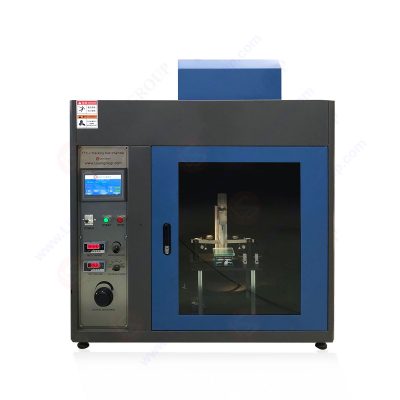
Principle of Operation of the Leakage Tracer Tester
The operation principle of a leakage tracer tester primarily involves insulation quality testing and leakage current testing of electrical equipment:
Insulation Quality Testing:
In insulation quality testing, the leakage tracer tester applies a specific voltage (often several times the rated operating voltage) to the insulation structure of the device under test. It then detects the leakage current on the insulation structure to assess the device’s insulation quality. Effective insulation quality prevents current leakage, ensuring device safety and reliability.
Leakage Current Testing:
During leakage current testing, the leakage tracer tester applies a certain fault current to the device under test and measures the leakage current while conducting analysis. By measuring and analyzing leakage current, the tester evaluates the device’s safety performance under fault conditions.
Components of the Leakage Tracer Tester and Their Functions
The leakage tracer tester is a vital equipment widely used in the electrical equipment and engineering fields, primarily for testing insulation quality and electrical safety performance. Its main components include the power module, measurement module, display module, and control module. Here’s a detailed introduction to each part:
Power Module:
The power module provides the necessary power for testing, including AC and DC power sources. It ensures stable power supply to all parts of the tester, ensuring smooth test operations.
Measurement Module:
The measurement module accurately measures the leakage current of the device under test using built-in sensors and measurement circuits. This module is the core part of the tester, and its accuracy and stability directly influence the reliability of test results.
Display Module:
The display module shows test results, operational status, and other relevant information for convenient monitoring and control by operators. Displayed information includes voltage values, leakage current values, test duration, and other parameters.
Control Module:
The control module manages the entire test process, including control and parameter settings, ensuring test accuracy and stability. It encompasses functions such as starting, stopping, parameter setting, and alarms, enabling comprehensive control of the testing process.
TTC-1 Tracking Test Chamber
Importance of Leakage Tracer Tester
Enhancing Safety: By testing insulation quality and leakage current, potential safety hazards in devices can be promptly identified, preventing electrical shocks and fire accidents.
Protecting Equipment: Detecting and improving insulation performance prolongs the lifespan of equipment.
Ensuring Normal Operation: Ensures electrical equipment and circuits operate under normal, safe conditions, preventing faults and downtime caused by leakage.
Key Applications of Leakage Tracer Tester
The leakage tracer tester plays critical roles in various fields, helping detect and resolve electrical leakage issues in equipment to ensure operational and personnel safety. Here are its important applications:
Residential Safety:
In households, numerous electrical appliances like air conditioners, washing machines, and water heaters are essential. Ensuring these devices operate normally is crucial for family comfort and safety. The leakage tracer tester helps identify and resolve leakage issues, ensuring the safety of household members.
Industrial Production:
In industrial environments with a large number of electrical devices operating in complex conditions, the risk of leakage is higher. Regular testing with the leakage tracer tester ensures safe device operation, reducing the likelihood of production accidents. Additionally, it aids in equipment maintenance, improving operational efficiency.
Power Systems:
Power systems are critical infrastructures supporting societal stability and development. Real-time monitoring with the leakage tracer tester identifies and resolves leakage issues during device operation, ensuring the safety of power systems. It also supports inspection and maintenance of power equipment, enhancing operational efficiency.
Maintenance and Repair:
During maintenance and repair of electrical equipment, improper handling or equipment aging can lead to leakage. The leakage tracer tester helps maintenance personnel detect and resolve these issues promptly, ensuring safe and smooth maintenance operations. It also verifies the restored operation of repaired equipment.
Hospitality and Catering Industries:
These industries rely heavily on numerous electrical devices, making them prone to leakage issues due to high usage frequency. The leakage tracer tester helps identify and resolve operational leakage problems promptly, ensuring the safety of customers and staff.
By employing advanced testing methodologies and ensuring robust performance, the leakage tracer tester contributes significantly to electrical safety and operational reliability across various sectors.
https://www.lisungroup.com/news/technology-news/leakage-tracer-tester-new-standard-for-enhancing-insulation-material-reliability.html


Comments
Post a Comment